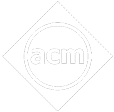- Written by aparna
- Last Modified on 6-03-2025
About CBSE Class 12 Exam 2025
The Central Board of Secondary Education (CBSE) is the responsible body for conducting the exams for class 12. CBSE recommends NCERT textbooks for all CBSE-affiliated schools, which are considered the best quality. The CBSE has announced that the term-wise examination pattern has been cancelled for the academic year 2025.
CBSE Class 12 students can download PDFs of the updated syllabus and NCERT Solutions from the article below. Embibe provides accurate study materials and mock tests for the students to practice. The new CBSE Class 12 curriculum includes chapters, sub-topics, and a grading scheme for each subject.
CBSE Class 12 Exam Summary 2025
The board will administer the CBSE Class 12 exams in a single term now. The board has released the Class 12 CBSE timetable for Arts, Commerce, and Science streams. The CBSE 12th board exam is a national-level examination held offline in exam centres throughout the country. Check the table below for some of the important information about the Class 12 CBSE Board Exam 2025:
| Particulars |
Details |
| Name of the Exam |
Central Board of Secondary Education Class 12 Board Examination |
| Commonly Known As |
CBSE Class 12 Board Exams |
| Conducting Body |
Central Board of Secondary Education (CBSE) |
| Level of Examination |
National level |
| Mode of Registration |
Offline via the school for regular students
Online for private students |
| Registration Fees |
INR 1500/- for five subjects and INR 300/- per additional subject |
| Mode of Exam |
Offline |
| Class 12 Language Subjects |
English, Hindi, Telugu, Kannada, Sanskrit, Tamil, Malayalam, Urdu, Bengali, Marathi, Gujarati, Punjabi, etc. |
| Class 12 Academic Subjects |
Mathematics, Biology, Physics, Chemistry, Computer Studies, Social Studies, Economics, Accountancy, Political Science, etc. |
| Frequency of Exam |
Annual |
CBSE Class 12 Brochure 2025
Students can now check important details like exam syllabus, notifications, exam dates, exam pattern, etc. on the official website of the CBSE Class 12 board exams or download class 12 CBSE details in PDF form here.
CBSE Official Website Link
https://www.cbse.gov.in
CBSE Class 12 Latest Updates 2025
- CBSE revamps Class 11 & 12 exams for the academic year 2024-25 as per NEP 2020. Competency questions (MCQs, case studies) jump from 40% to 50%, emphasizing applying knowledge vs. memorization. Constructed responses (short/long answers) decrease from 40% to 30%. MCQ weightage remains 20%. This shift assesses deeper understanding and problem-solving skills.
- CBSE issued the CBSE Board Class 12 admit card on its portal on February 3, 2054, for private students. Regular aspirants will need to get their hall tickets from their respective schools.
CBSE Class 12 Registration Process 2025
The registration process for CBSE Class 12 starts in Class 11 only. The schools initiate the registration process for the students in Class 12. Registrations for CBSE Class 12 were conducted in October. Students who were enrolled in CBSE Class 11 and have passed the same were allowed to register for Class 12 as well. Generally, the schools need to submit a List of Candidates (LoC) for all the students that will be appearing for the board exams and their details. Students must fill in the information carefully and check it before submitting it.
CBSE launched the online platform for data correction, Pariksha Sangram, on the request of affiliated schools to make a List of Candidates (LOC). The board gave the schools an ID and password to log in to the portal. Before making any changes to the LOC, schools were asked to go through the guidelines thoroughly. Based on the school information, the board will further provide approval or denial.
CBSE Class 12 Exam Pattern 2025
Students in CBSE Class 12 should thoroughly review the exam pattern. The exam pattern is determined based on the most recent syllabus, which will assist students in preparing for the exam. One of the most important requirements for students taking the Board exam is an exam pattern. Students can refer to the exam pattern given below for a better understanding of the CBSE Class 12 exam:
| Type of Questions |
Weightage |
| Competency-Based Questions [Multiple Choice Questions, Case Studies, Source-based Integrated Questions, etc.]. |
30% (Minimum) |
| Objective Type Questions |
20% |
| Short Answer/Long Answer Questions |
50% [As Per Existing Pattern] |
Students can also check the subject-wise mark breakup from the PDF here.
CBSE Class 12 Exam Pattern Details – Scoring Pattern (+/- Marking)
CBSE has introduced some changes in the board exam pattern from Class 9 to 12 for the academic session 2025. In light of the new National Education Policy (NEP), the board has begun to move toward Competency-Based Education (CBE). Students will be asked more questions on the application of concepts in real life. At the same time, the overall marks and duration of the examination will remain the same.
Students can check the class 12th CBSE exam pattern on the official website of the Central Board of Secondary Education (CBSE). There are two stages of the exam. One is theoretical, and the other is practical. Theory subjects are held for 80 to 70 marks for language and academic subjects, while practical exams are conducted for Mathematics, Physics, Chemistry, Biology, and Computer Science. For convenience, candidates can check the complete exam pattern from the information given below:
- Mode of Examination: Offline
- Duration of Exam: 3 hours
- Types of Questions: Multiple-choice questions and subjective-type questions
- Medium of Question: English for Academic Subjects. Furthermore, it depends on the Language subject.
- Maximum Marks for Theory: 80 or 70 Marks
- Maximum Marks for the Practical exam: 20 or 30 Marks
CBSE Class 12 board exam pattern is divided into three main streams: Science, Commerce, and Arts. We have provided below the CBSE Class 12 exam pattern for your reference:
- Some subjects in CBSE Class 12 are common for all stream students.
- The total duration is 3 hours.
- The question paper usually consists of the following type of questions:
- Very Short Answer Questions (1 mark each),
- Short Answer Type Questions-I (2 marks each),
- Short Answer Type Questions-II (3 marks each),
- Value-based Questions (4 marks),
- Long Answer Type Questions (5 marks each).
CBSE Class 12 Mathematics Exam Pattern
Algebra, Geometry, Trigonometry, Mensuration, Coordinate Geometry, Statistics, and Probability are all covered in the CBSE Class 12 Maths syllabus. Embibe provides practice questions for all of these chapters. Below we have provided the CBSE Class 12 Mathematics exam pattern for your reference:
| Particulars |
Details |
| Exam Duration |
3 Hours |
| Internal Marks |
20 marks |
| Theory Marks |
80 marks |
| Total No. of Questions |
36 |
| Very Short Answer Type Questions (1 mark each) |
20 |
| Short Answer Type Questions (2 marks each) |
6 |
| Long Answer Type-I Questions (4 marks each) |
6 |
| Long Answer Type-II Questions (6 marks each) |
4 |
CBSE Class 12 Physics Exam Pattern
Physics is an important subject in CBSE Class 12. Students who wish to take the competitive exam must carefully follow the exam pattern. Students must study from the best books to properly prepare for the Class 12 Physics exam. The CBSE Class 12 Physics exam pattern is provided below:
| Particulars |
Details |
| Exam Duration |
3 Hours |
| Internal Marks |
20 marks |
| Theory Marks |
80 marks |
| Total No. of Questions |
36 |
| Very Short Answer Type Questions (1 mark each) |
20 |
| Short Answer Type Questions (2 marks each) |
6 |
| Long Answer Type-I Questions (4 marks each) |
6 |
| Long Answer Type-II Questions (6 marks each) |
4 |
CBSE Class 12 Chemistry Exam Pattern
Chemistry entails the study of many fascinating concepts and topics. Students must thoroughly practice the Class 12 Chemistry questions to better prepare for the exam. The CBSE Class 12 Chemistry 2025 exam pattern is provided below in detail:
| Particulars |
Details |
| Duration of Exam |
3 hours |
| Marks Allotted for Practical |
30 marks |
| Marks Allotted for Theory |
70 marks |
| Very Short Answer Questions |
20 questions |
| Short Answer Questions |
7 questions |
| Long Answer Questions (3 Marks each) |
7 questions |
| Long Answer Questions (5 Marks each) |
3 questions |
CBSE Class 12 Biology Exam Pattern
CBSE Class 12 Biology is a continuation of the units taught in Class 11. Students may refer to the Embibe Big Books for clarification and a better understanding of the chapter. The exam pattern for the CBSE Class 12 Biology is provided below in detail:
| Particulars |
Details |
| Duration of Exam |
3 hours |
| Marks for Practical |
30 marks |
| Marks for Theory |
70 marks |
| Total Number of Questions |
27 Questions |
| Very Short Answer Question |
5 Questions |
| Short Answer Questions |
7 Questions |
| Long Answer Questions (3 marks each) |
12 Questions |
| Long Answer Questions (5 marks each) |
3 Questions |
CBSE Class 12 English Exam Pattern
The CBSE Class 12 English exam pattern explains the mark distribution for both English Language and English Literature. In the table below, we have formulated the CBSE Class 12 English exam pattern that students must follow to improve their learning capacity:
| Particulars |
Details |
| Exam Duration |
3 hours |
| Maximum Marks |
100 marks (80 marks for theory + 20 marks for the assessment of listening and speaking skills) |
| Total Number of Questions |
33 |
| MCQ and Objective-type Questions (1 mark each) |
20 |
| Short Answer Type-I Questions (2 marks each) |
5 |
| Short Answer Type-II Questions (4 marks each) |
3 |
| Long Answer Type Questions (6 marks each) |
3 |
| Very Long Answer Type Questions (10 marks each) |
2 |
CBSE Class 12 Exam Pattern Details – Total Time
The CBSE Class 12 exam is conducted for a duration of 3 hours. The additional 15 minutes are provided to ensure that the students have enough time to go through the question paper so that they can prepare accordingly.
|
Duration of Exam
|
3 hours
|
|
Full Marks
|
100 (80 for theory and 20 for internals)
|
|
Total Number of Questions
|
14 Questions
|
|
MCQ/one-word answer questions
|
2 Questions (Mostly from unseen passages)
|
|
Short Answer Type (2 marks each)
|
3 Questions (Choice Available)
|
|
Long Answer Type Questions (4 marks each)
|
1 Question (Choice Available)
|
|
Short Answer Type (5 marks each)
|
2 Questions (Choice Available)
|
|
Long Answer Type (6 marks each)
|
5 Questions (Choice Available)
|
|
Very Long Answer Type (10 marks each)
|
2 Questions (Choice Available)
|
Embibe Lab Experiments for CBSE Class 12
The CBSE Class 12 curriculum includes limited periods for practicals. Thus, students may not always get the opportunity to try the practicals several times. Embibe Lab Experiments app allows students to perform virtual experiments for all CBSE Class 12 practical topics of Physics, Chemistry and Biology.
Embibe Lab Experiments for CBSE Class 12 Physics
Students can perform experiments for 54 practical topics of CBSE Class 12 Physics. Students can sign up to the app and start the experiment. Click on the links below for Embibe Lab Experiments for the CBSE Class 12 Physics subject.
Click Here for Embibe Lab Experiments for CBSE Class 12 Physics
Embibe Lab Experiments for CBSE Class 12 Chemistry
Embibe Lab Experiments has 67 practicals for CBSE Class 12 Chemistry. Students can now strengthen their conceptual understanding of the practical topics.
Click Here for Embibe Lab Experiments for CBSE Class 12 Chemistry
Embibe Lab Experiments for CBSE Class 12 Biology
Students can perform 32 experiments for the topics of CBSE Class 12 Biology on the Embibe Lab Experiments app.
Click Here for more Embibe Lab Experiments for CBSE Class 12 Biology
CBSE Class 12 Exam Syllabus 2025
CBSE designs the Class 12 CBSE syllabus for students to prepare for their exams effectively. The syllabus covers the entire course structure including the marks weightage for all the subjects. Below we have provided CBSE Class 12 syllabus for your reference:
CBSE Class 12 Admit Card 2025
CBSE released the Class 12 admit card on their official website on February 5, 2025. Students must therefore check the information accurately so that they can appear for the examination. The students should collect the CBSE Class 12 admit card from the respective school body.
Regular students cannot download the admit card from the official website as they do not have the login credentials. The Board permits the respective affiliated schools to only download the admit card using their login credentials. The school authorities must download the admit card from the website and provide the hard copy to students.
Below are the steps students need to follow to download the Class 12 admit card:
- 1st Step: Visit the official website of CBSE at cbse.gov.in
- 2nd Step: Navigate to the Pareeksha Sangam tab on the main website.
- 3rd Step: Click on pre-exam activities.
- 4th Step: A new window will appear. Click on the ‘Admit Card’ link.
- 5th Step: Enter the login credentials and resolve the captcha
- 7th Step: Click on the “Login” button.
- 8th Step: The CBSE Class 10 admit card will appear on the new screen. Download it and provide it to the respective students.
CBSE Class 12 Study Plan to Maximise Score
Being the most popular national-level exam, the competition in CBSE is very stiff as lakhs of students from all over the country appear for this exam every year. The competition gets more intense as the exams provide a pathway toward securing a better career. Furthermore, the Class 12 exam is essential for competing in competitive exams like JEE Main, NEET, DUET, CLAT, etc. Below we have provided a detailed study plan to maximise scores in their Class 12 exams.
Preparation Tips for CBSE Class 12 Exams
To prepare for CBSE Class 12 board exams, you need to have a diligent study routine. Thus, to enhance your CBSE Class 12 Board Exam preparation, you can follow the points given below:
- Exam Pattern: Students are advised to go through the CBSE Class 12 exam pattern carefully. This helps the students to understand the pattern of questions that will be asked in the exams. It helps them to prepare efficiently for the exams.
- Syllabus: Students should make it a point to refer to the CBSE Class 12 syllabus while preparing for their exams. The syllabus will give them a fair idea of the topics they need to study for the CBSE class 12 exams.
- Take Notes: Students should take down notes while studying so that they can revise all the concepts during exams.
- Previous Years’ Question Papers: Students should solve the previous years’ question papers to get an idea about the questions that appear in the exams repetitively. This helps students to manage their time efficiently.
CBSE Class 12 Detailed Study Plan
We have provided a sample timetable to help you prepare for CBSE Class 12 exams. Students are advised to create a schedule for one subject at a time. One can also modify the sample timetable provided in this section as per their preferences as well.
| Days |
Subjects |
Important Tips |
| 1-4 |
Physics – Keep the complete list of formulae, experiments, and derivations |
1. Try revising all the concepts weekly that you have studied during the weekdays.
2. Identify two subjects that you find the most difficult and spend extra time on those subjects.
3. Practice sample papers/previous year’s papers to understand the pattern and to prepare effectively for your exams.
4. Keep yourself calm, positive, and confident. |
| 5-9 |
Chemistry – Questions related to organic and inorganic chemistry are fact-based questions that can be solved quickly with good practice. |
| 10-15 |
Maths – Firstly, clear the basic fundamentals and concepts of the subject. Some calculations can be lengthy. You should practice these types of questions a lot. |
| 16-18 |
English – Read as much as you can. Any piece of good literature should not escape your hands: Your textbooks, the newspaper, or anything else you can find. Follow a good grammar book and know the basic rules. |
| 19-22 |
Computer Science – The key to a successful Computer Science exam is understanding. As the majority of the question paper is based on programming, the only way to score is by having a thorough understanding of the programming languages. |
| 22-26 |
Revision days as per subjects |
| 26-30 |
Sample or Previous Year Papers |
CBSE Class 12 Results 2025
The result for CBSE Class 12 for the academic year 2025 will be declared in May 2025. The steps to download the CBSE Class 12 result or scorecard are as follows:
- 1st Step: Go to CBSE’s official result website, i.e., cbseresults.nic.in.
- 2nd Step: On the website, search for the “Senior School Certificate Examination (Class-XII)” link and click on the link.
- 3rd Step: On the next page, candidates need to enter their Class 12 roll number, registration ID, school number, and centre number.
- 4th Step: Then, check the details once and click on the “Submit” button.
- 5th Step: Upon clicking on the button, the CBSE Class 12 result will appear on the screen.
- 6th Step: The CBSE Class 12 result will finally appear on the screen.
CBSE Class 12 Toppers List
Students taking the CBSE Class 12 exam should look over the CBSE Class 12 topper list to see how much each topper scored. It will help to improve the preparation strategy, which will benefit students later on. The CBSE publishes the list of exam toppers for each stream. Last year’s CBSE Class 12 toppers’ percentage is given below:
| Sr. No. |
Name of Region |
Pass Percentage (%) |
| 1 |
Trivandrum |
99.91 |
| 2 |
Bengaluru |
99.18 |
| 3 |
Chennai |
99.14 |
| 4 |
Ajmer |
97.27 |
| 5 |
Pune |
96.92 |
| 6 |
Patna |
94.57 |
| 7 |
Chandigarh |
93.84 |
| 8 |
Bhubaneswar |
93.64 |
| 9 |
Prayagraj |
92.55 |
| 10 |
Noida |
92.50 |
| 11 |
Panchkula |
92.33 |
| 12 |
Bhopal |
91.24 |
| 13 |
Delhi West |
90.67 |
| 14 |
Dehradun |
90.61 |
| 15 |
Delhi East |
88.30 |
| 16 |
Guwahati |
76.90 |
CBSE Class 12 Previous Year’s Toppers
For previous years, we have provided the complete CBSE Class 12 topper list. In 2022, the CBSE Class 12 pass percentage was 92.71%. In 2022, approximately 33,000 students received 95%, while 1.34 lakh received more than 90%. The list of toppers for CBSE Class 12 toppers for the year 2020 is as follows:
| Rank |
Name |
Marks Obtained |
| 1 |
Divyanshi Jain |
600/600 |
| 1 |
Tushar Singh |
500/500 |
CBSE Class 12 Compartment Exams
The CBSE Class 12 supplementary exam will be conducted a month after the declaration of results. Students who failed to qualify for a particular subject or overall in CBSE exams can appear for the compartment exams. The compartment exams are conducted for 3 hours. Students will need to fill up the form and collect their admit cards to appear for the compartment exam. The compartment exams for CBSE Class 12 are likely to be conducted in August 2025.
FAQs on CBSE Class 12 Exam 2025
Some of the frequently asked questions on the CBSE Class 12 exam 2025 are as follows:
Q: Is the CBSE Class 12 syllabus the same as NCERT?
Ans: Yes! CBSE Class 12 syllabus is the same as the NCERT syllabus.
Q: Is there a change in the CBSE Class 12 syllabus for 2025?
Ans: Yes! The officials at CBSE have revised the CBSE Class 12 syllabus this year.
Q: Where can I get the CBSE official syllabus for Class 12?
Ans: You can get the CBSE Class 12 official syllabus from this article. You can also download the same from the CBSE official website.
Q: How should I start my preparation for Class 12?
Ans: Start with the topics that you are comfortable with. Take your preparation level from easy to moderate, and then moderate to difficult.
Q: What are the passing marks for CBSE Class 12 exams?
Ans: The pass marks for CBSE Class 12 exams are 33.
CBSE Class 12 Educational Institutions
The Central Board of Secondary Education (CBSE) is an Indian national education board for public and private schools. It was founded in 1962. The Union Government of India is in charge of controlling and managing the Board’s operations. CBSE is affiliated with approximately 21,271 schools in India and 220 schools in 28 foreign countries. Below are the top 20 CBSE schools in India for CBSE Class 12:
- DAV Sr. Sec. School, Mogappair, Chennai
- DAV Girls Sr. Sec. School, Lloyds Road, Chennai
- DAV Boys Sr. Sec. School, Lloyds Road, Chennai
- Ramakrishna Mission Vidyapith, Deoghar, Jharkhand
- Sri Kumaran Children’s Home School, Bangalore
- National Public School, Koramangala, Bangalore
- Chinmaya International Residential School, Coimbatore
- National Public School, HSR Layout, Bangalore
- Delhi Public School, Harni, Vadodara
- The Heritage School, Sector 62, Gurgaon
- Hindu Senior Secondary School, Indira Nagar, Chennai
- DAV Girls Senior Secondary School, Mogappair, Chennai
- HAL Public School, Bangalore
- Jawahar Navodaya Vidyalaya, Chennithala, Alappuzha
- National Academy for Learning, Bangalore
- Bhavan Vidyalaya, Sector 27B, Chandigarh
- Jawahar Navodaya Vidyalaya, Neriamangalam, Kerala
- Vidya Mandir Senior Secondary School, Mylapore, Chennai
- Sardar Patel Vidyalaya, Lodi Estate, New Delhi
- Sri Sathya Sai Higher Secondary School, Prasanthi Nilayam, AP
List of CBSE Class 12 Future Exams
Class 12 exams are the qualifying criteria for most of the entrance exams conducted for admission to professional courses and other undergraduate programs. Below is the list of future exams that a student can appear for while in Class 12 or after completing it.
| Stream |
Exam |
| Engineering |
Joint Entrance Examination (JEE) Main
JEE Advanced
Birla Institute of Technology and Science Admission Test (BITSAT) entrance exam
COMED-K
IPU-CET (B. Tech)
Manipal (B. Tech)
VITEEE
AMU (B. Tech)
NDA Entrance with PCM (MPC) |
| Medical |
National Eligibility Cum Entrance Test (NEET)
AIIMS
JIPMER |
| Defence Services |
Indian Maritime University Common Entrance Test
Indian Navy B.Tech Entry Scheme
Indian Army Technical Entry Scheme (TES)
National Defence Academy and Naval Academy Examination (I) |
| Fashion and Design |
National Institute of Fashion Technology (NIFT) Entrance Test
National Institute of Design Admissions
All India Entrance Examination for Design (AIEED)
Symbiosis Institute of Design Exam
Footwear Design and Development Institute
Maeer’s MIT Institute of Design
National Institute of Fashion Design
National Aptitude Test in Architecture
Center for Environmental Planning and Technology (CEPT) |
| Social Sciences |
Banaras Hindu University Exam
IIT Madras Humanities and Social Sciences Entrance Examination (HSEE)
TISS Bachelors Admission Test (TISS-BAT) |
| Law |
Common-Law Admission Test
All India Law Entrance Test (AILET) |
| Science |
Kishore Vaigyanik Protsahan Yojana (KVPY)
National Entrance Screening Test (NEST) |
| Mathematics |
Indian Statistical Institute Admission
Admissions to Universities
Various B.Sc Programs
Banasthali Vidyapith Admission |



















































